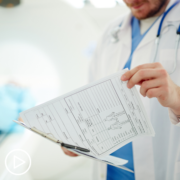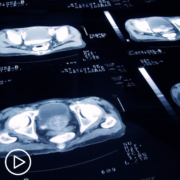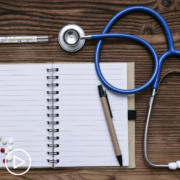How Is Diffuse Large B-Cell Lymphoma Explained to a Newly Diagnosed Patient?
How Is Diffuse Large B-Cell Lymphoma Explained to a Newly Diagnosed Patient? from Patient Empowerment Network on Vimeo.
How do diffuse large B-cell lymphoma (DLBCL) experts explain this cancer to newly diagnosed patients? Expert Dr. Nirav Shah shares his perspective on how he leads patients through their diagnosis and treatment phases and key points that he shares to educate his patients.
Dr. Nirav Shah is an Associate Professor at the Medical College of Wisconsin. Learn more about Dr. Shah.
[ACT]IVATION TIP:
“…learn as much as they can about this diagnosis and take notes, because I know that often patients in that first visit don’t really register everything. Just because they’re feeling overwhelmed.”
See More from [ACT]IVATED DLBCL
Download Resource Guide en español
Related Resources:
Transcript:
Lisa Hatfield:
Okay. So, Dr. Shah, you have a patient that comes into your office newly diagnosed with DLBCL, maybe from their…or they’ve heard it from their primary care provider, they understand, they looked it up on the Internet, diffuse large B-cell lymphoma, they see the lymphoma, I would anyway, I’d see lymphoma, and I know it’s cancer. What’s included in your initial evaluation, how do you explain in basic terms to a newly diagnosed patient what DLBCL is?
Dr. Nirav N. Shah:
Yeah, great question, Lisa. I think that any time somebody gets that diagnosis with a cancer label on it, it’s incredibly overwhelming, and so what I try to do when I see my new patients is first simply just learn about them. How did this come about, what symptoms led to this diagnosis? Learn about their past medical history, which impacts how I might treat them and what options I’m going to give them, and sort of learn about who they are a little bit, learn about their family, what they do for a living, because I think those are important values to know about your patients, when trying to make a treatment decision.
What I try to explain to these patients is that DLBCL, yes, it is a cancer. Yes, it is, unfortunately, an aggressive cancer, one that can be very rapidly growing, but unlike a lot of cancers, it is a curable type of cancer, and I really try to highlight that like all cancers, unfortunately, not every single patient is cured with diffuse large B-cell lymphoma, but initially, I think there’s reason to have optimism and hope because the goal is, for me, when I meet a new DLBCL patient to provide a curative intent treatment approach for them.
As a part of that initial evaluation, we need to know more about where their disease is and in lymphoma. We often use a PET-CT, which is a special type of scan that sort of lights up areas that can be involved with lymphoma. In some cases, we do a bone marrow biopsy, although that is less indicated now because of how good the PET scans are, and then we talk about other testing, a lot of the chemotherapies can cause problems to your heart, so we often do an ultrasound of your heart to make sure it’s healthy enough to be able to tolerate some of the regimens that we consider for this disease, and then we talk about access in terms of how are we going to get the chemotherapy into the patient, and whether or not they would need a device like a port. But the main focus of the conversation is explaining the disease, teaching about the disease and focusing on that unlike other cancers, even stage III or IV diffuse large B-cell lymphoma is a curable entity, and the key is moving promptly getting the workup done in an efficient but complete manner and then initiating a treatment plan.
Lisa Hatfield:
Right, thank you. And if you had one tip for patients when they first come in, what would you tell this patient that’s coming to see you in?
Dr. Nirav N. Shah:
Yeah. I think my activation tip would be to learn as much as they can about this diagnosis and take notes, because I know that often patients in that first visit don’t really register everything. Just because they’re feeling overwhelmed.
Share Your Feedback:
Create your own user feedback survey












